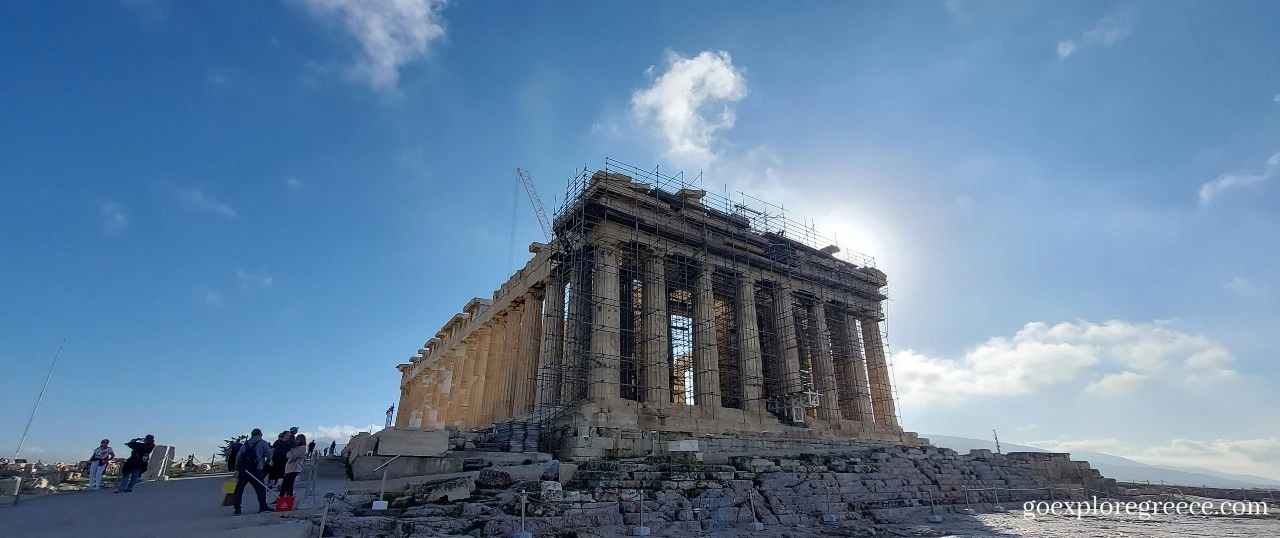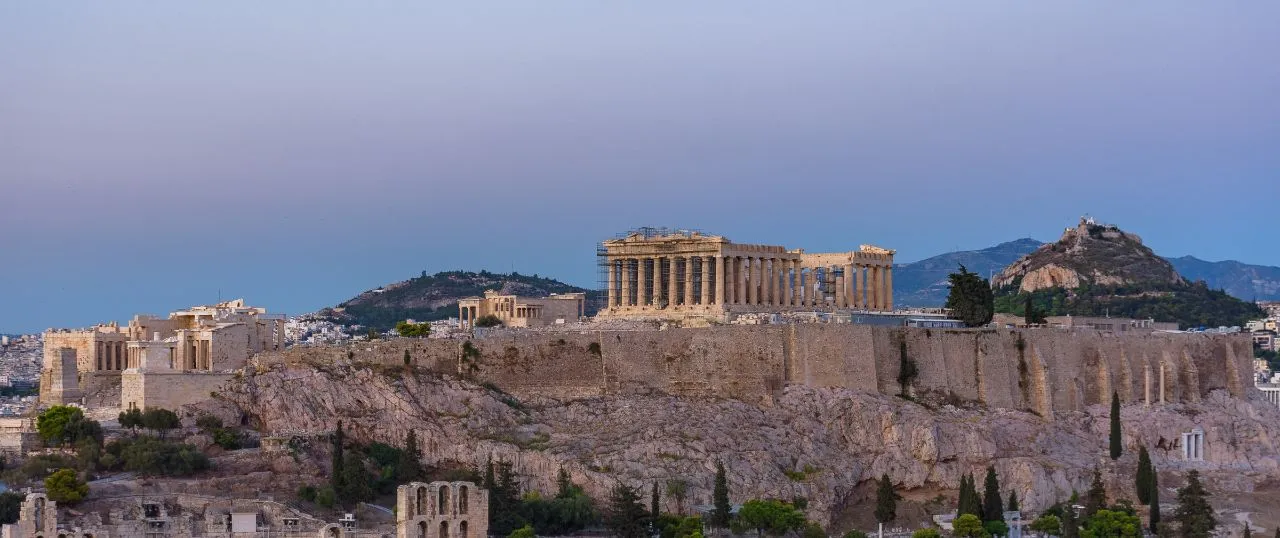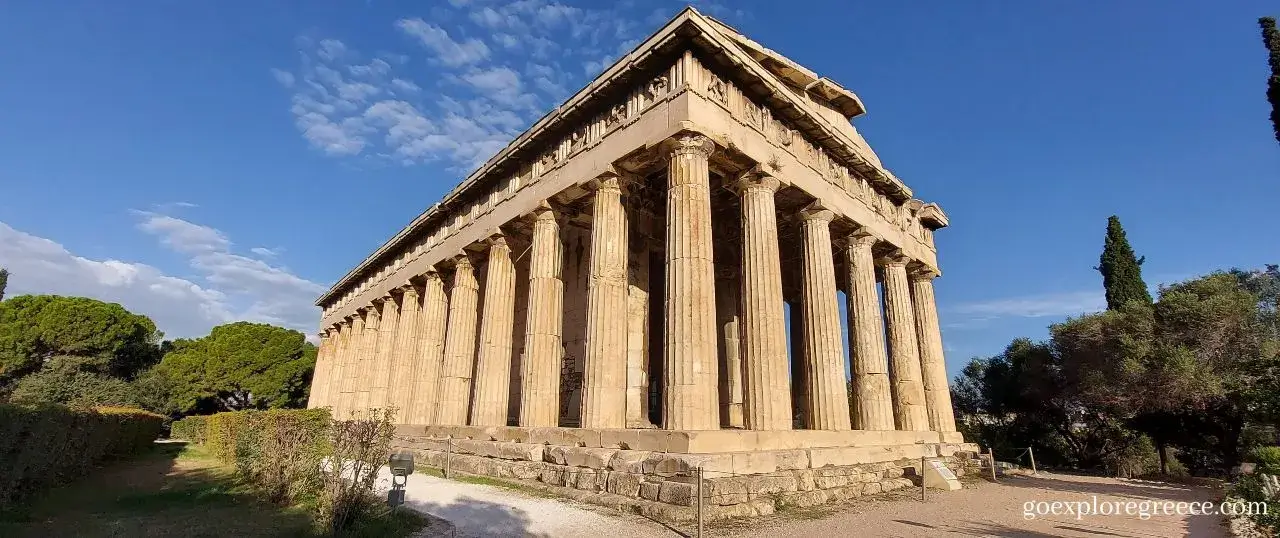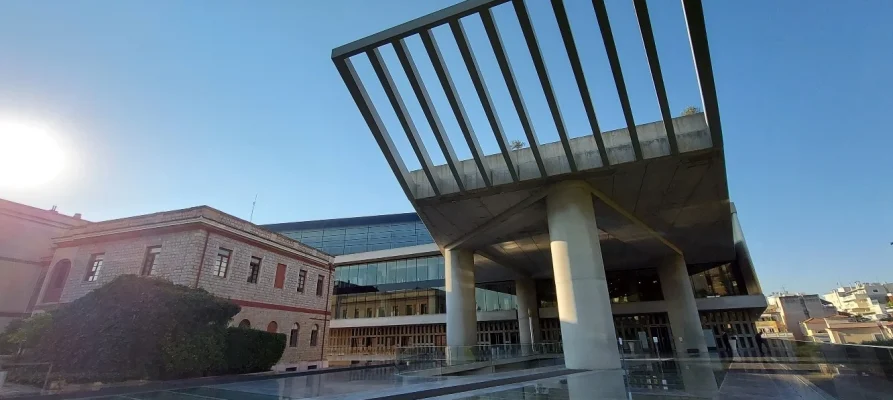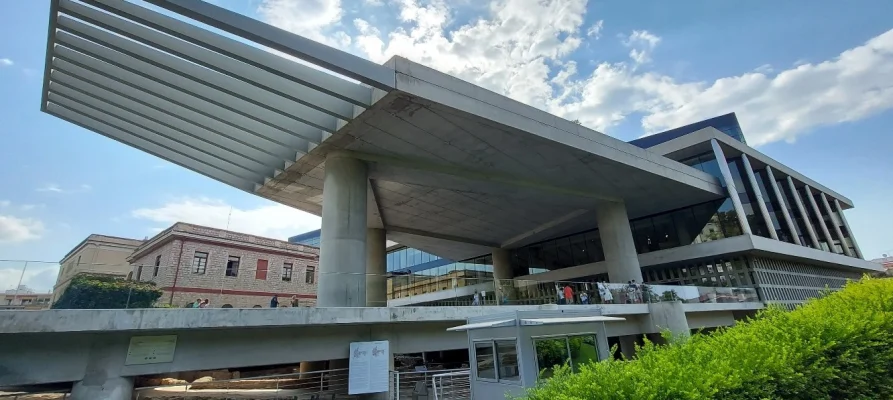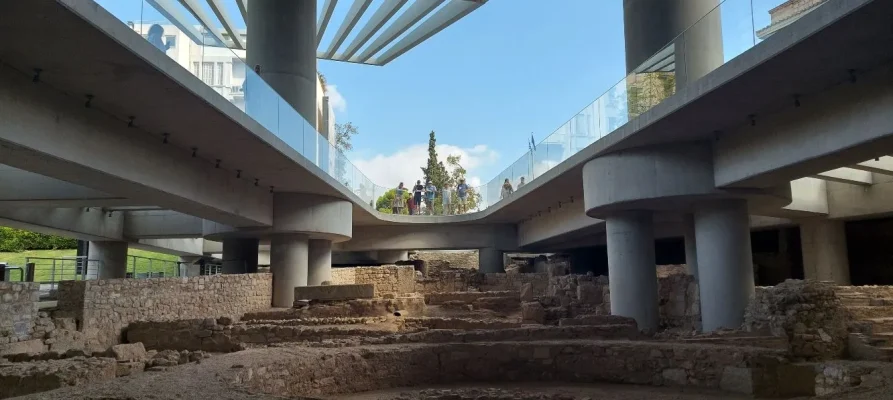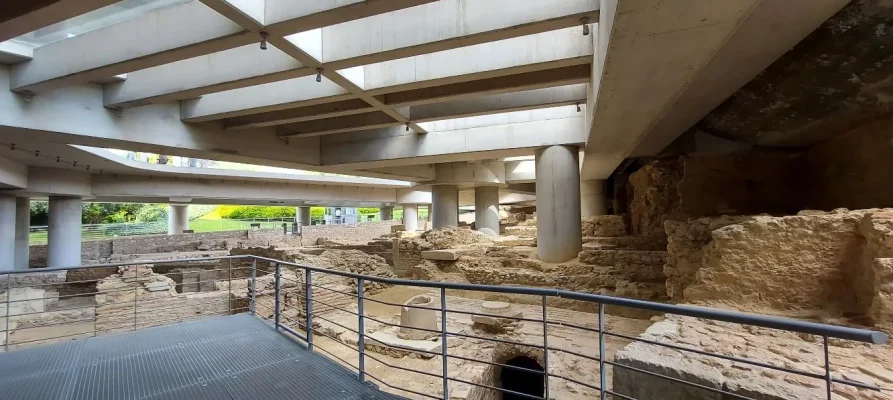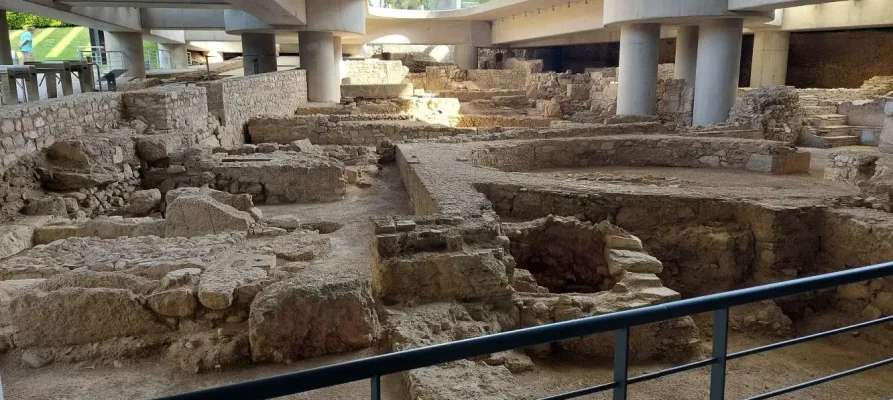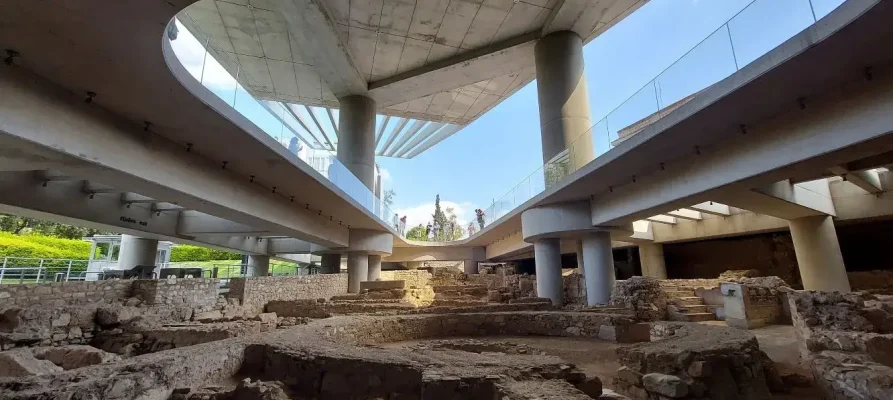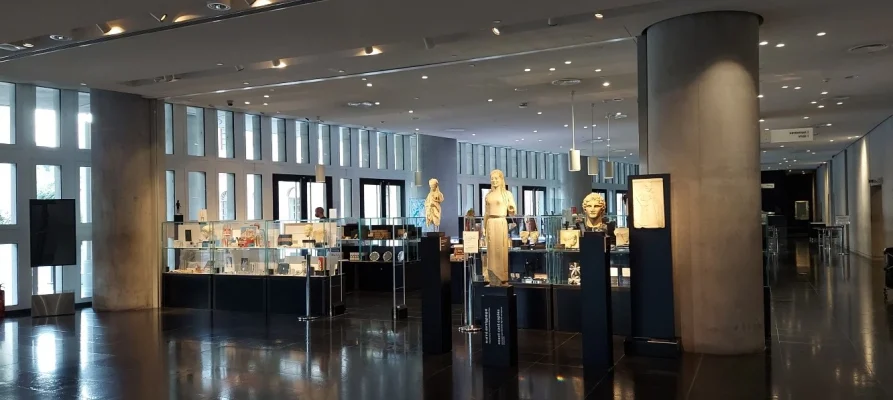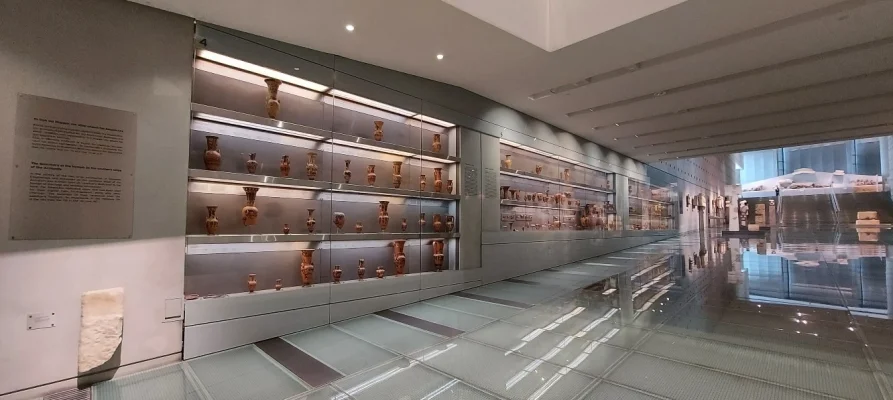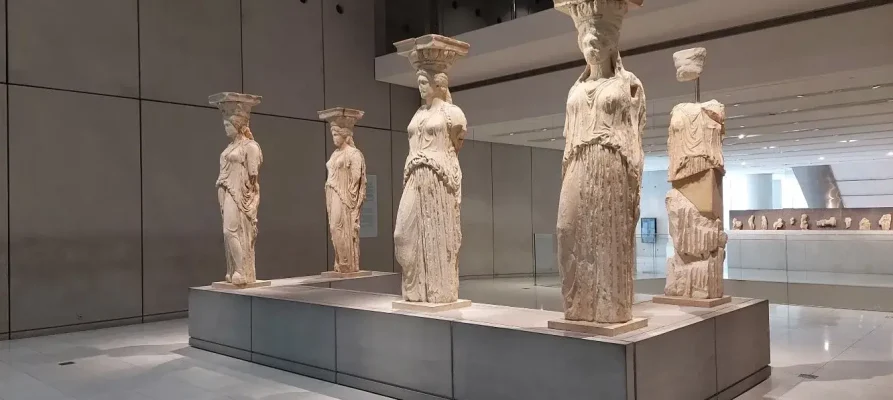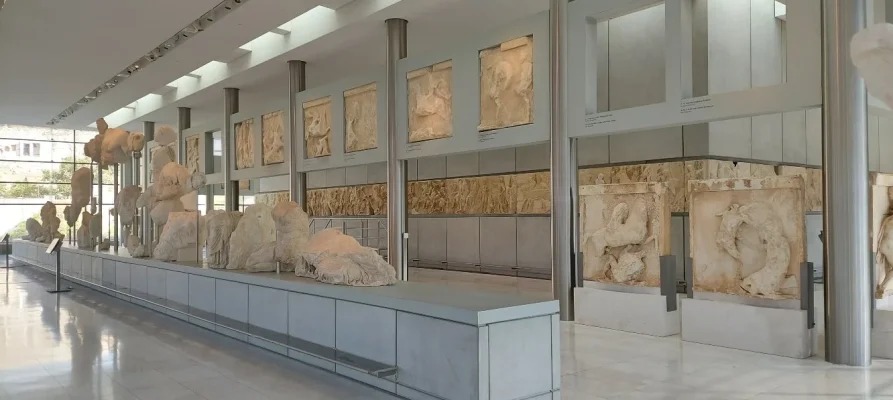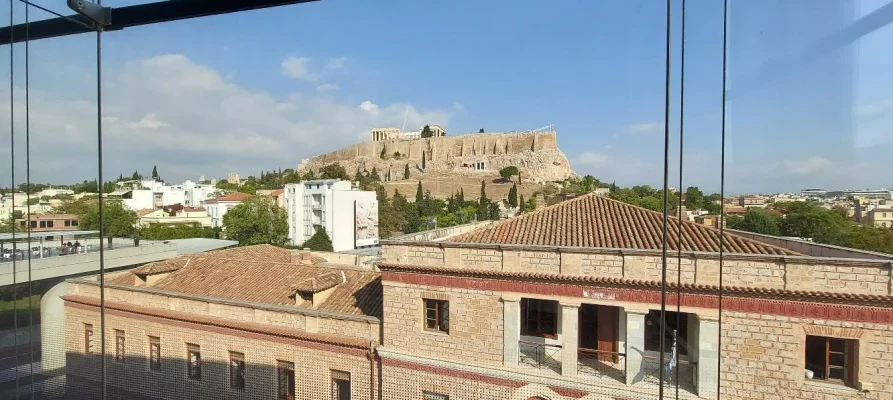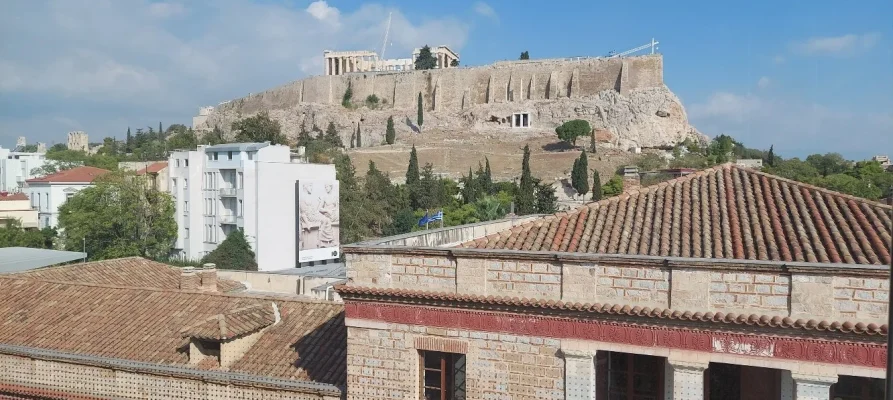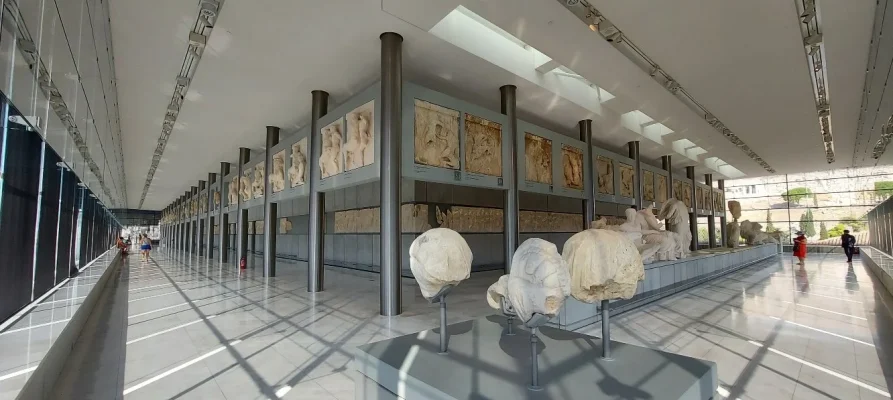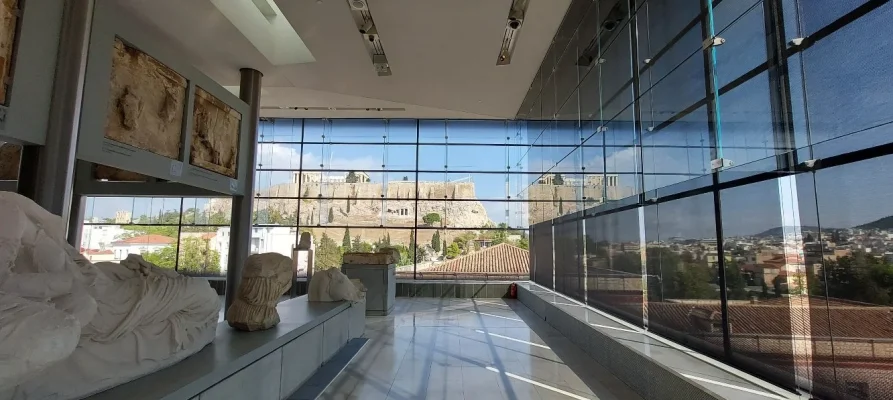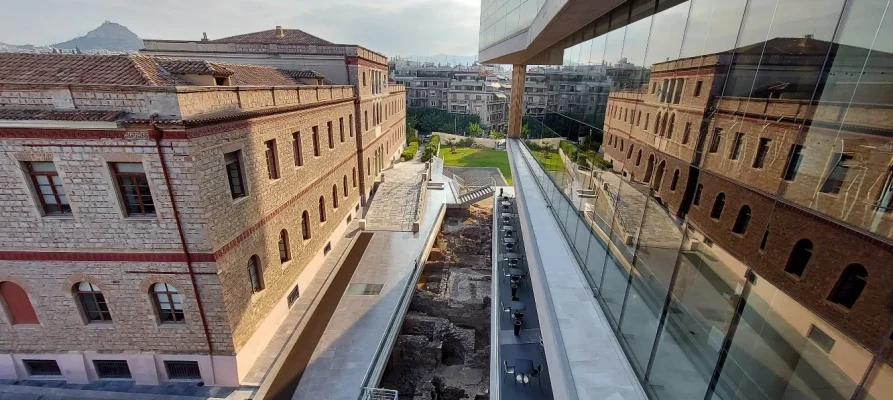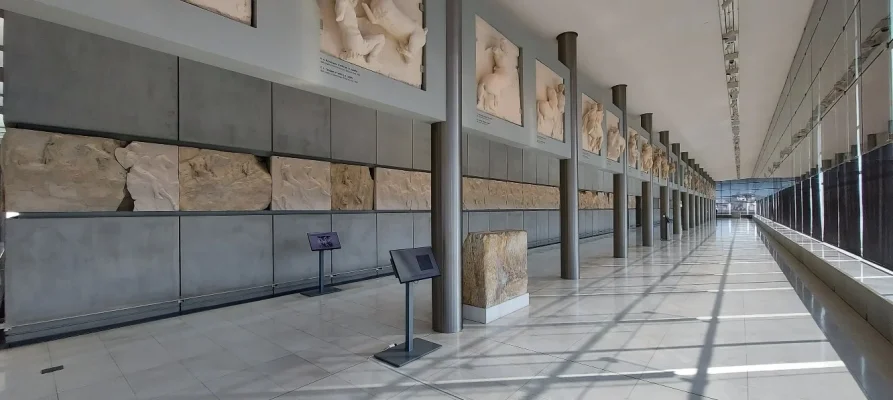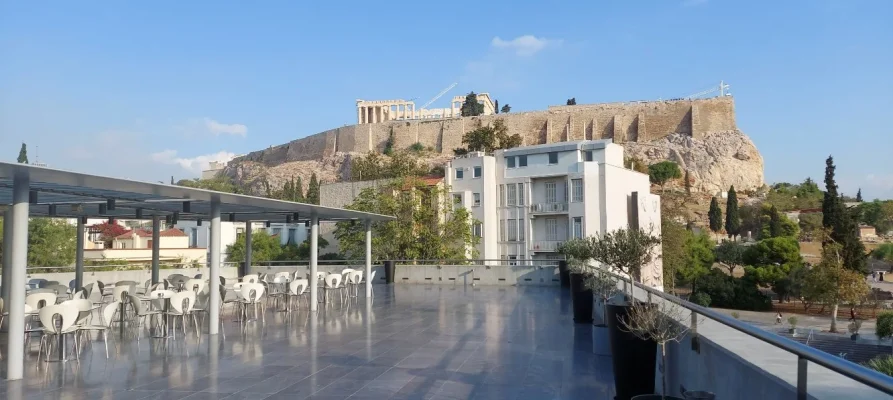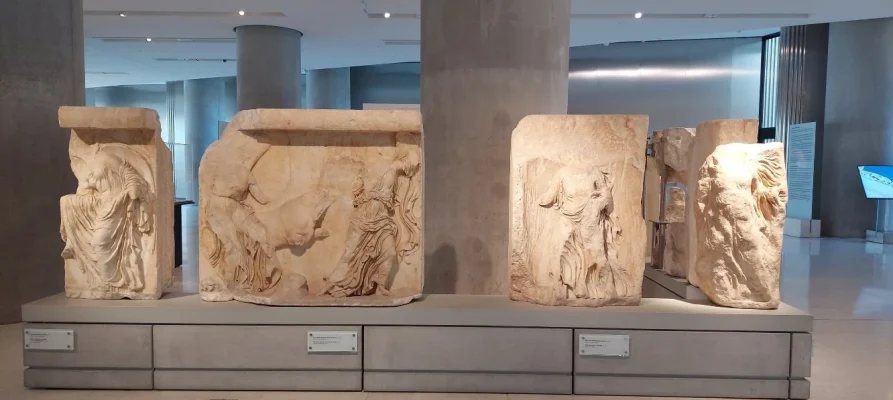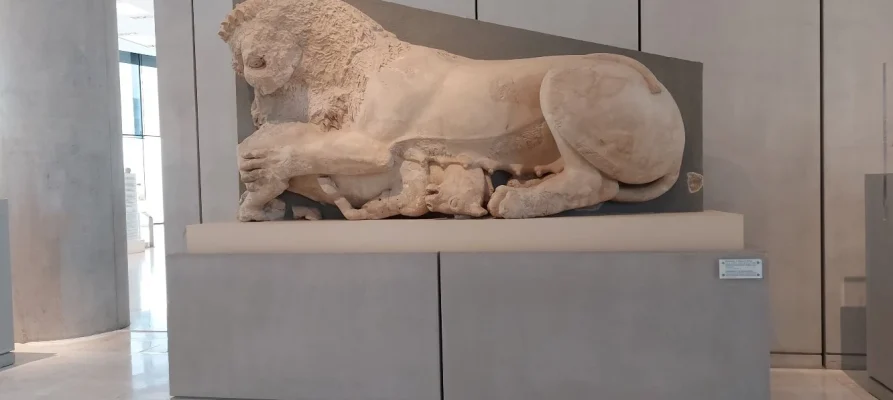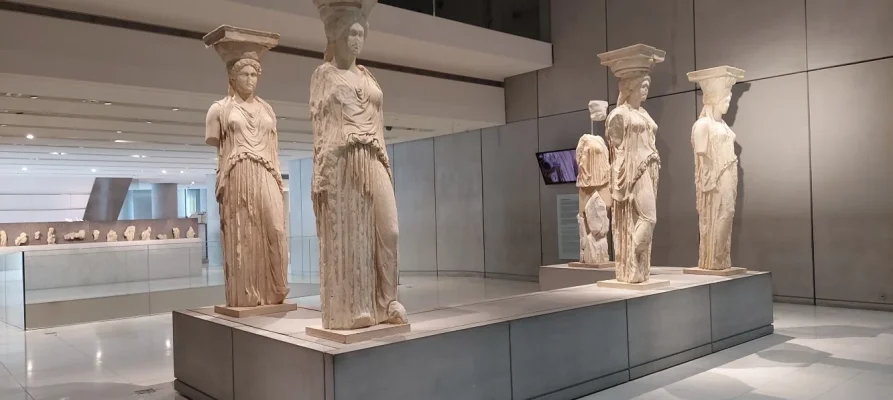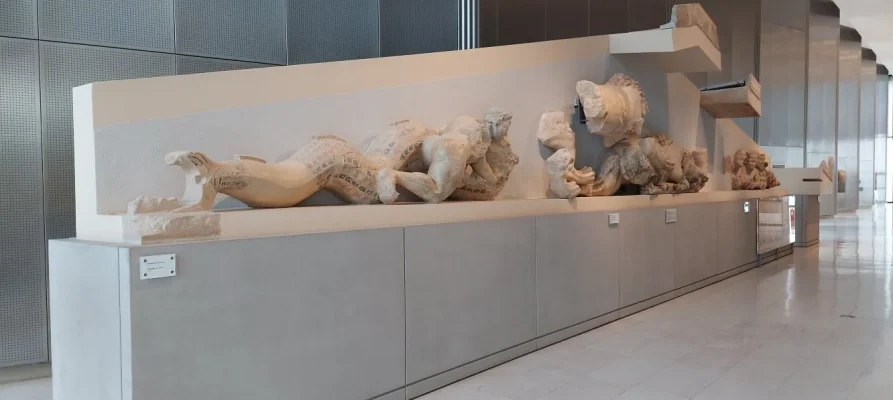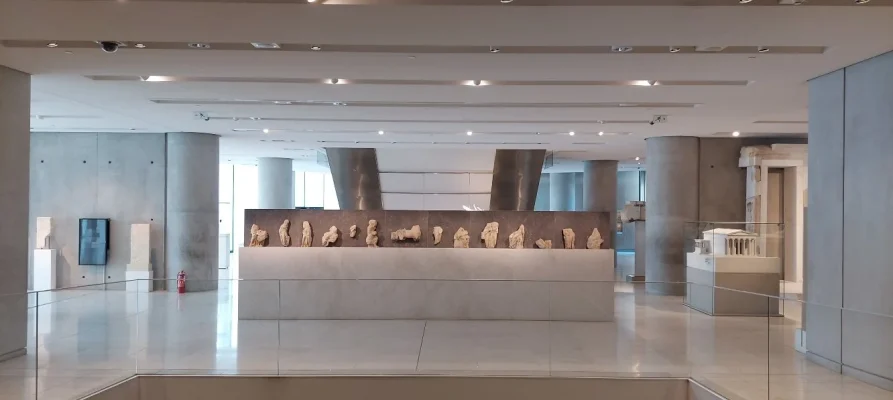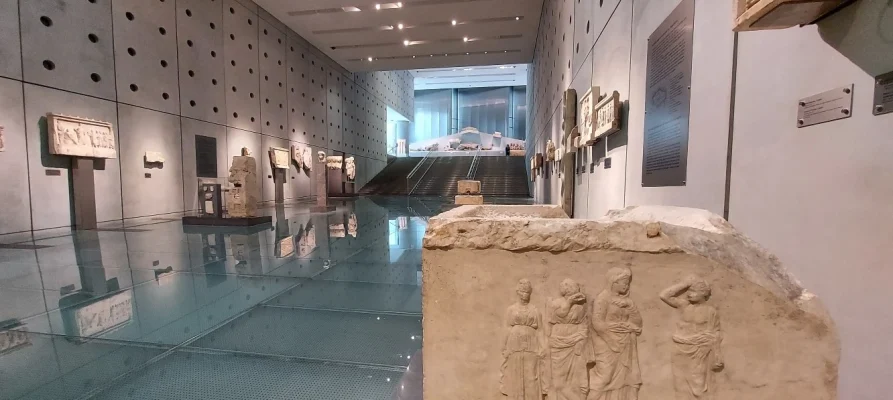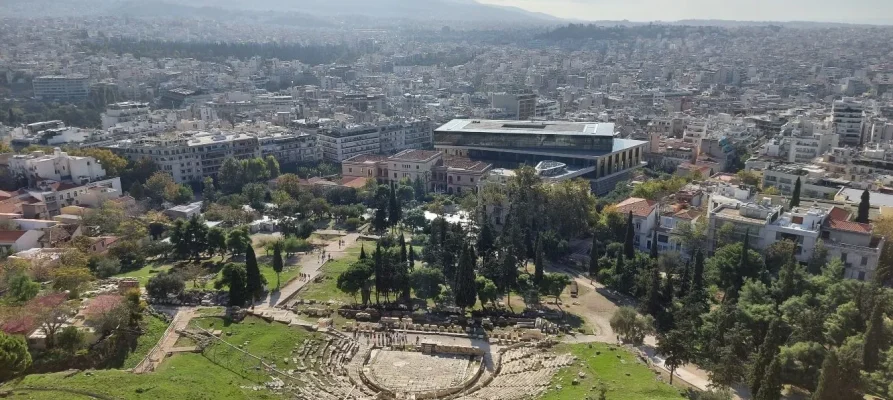Acropolis Museum
Acropolis Museum
Let me paint a picture for you. Imagine a place where history doesn’t just whisper; it practically shouts from the rooftops. A place where the grandeur of the ancient world comes alive in all its marble glory. Where can you find this mystical locale, you ask? Look no further than the Acropolis Museum in Athens.
Tucked into the heart of the city, right at the foot of the Acropolis of Athens, the museum is just a few minutes walk from the Ioannis Makriyiannis Statue and the Arch of Hadrian.
The Acropolis Museum is more than just one of the many museums in Athens. It is the custodian of a tale that stretches back millennia. For anyone compiling a list of things to do in Athens, this should top the charts. Why, you ask? Let’s dive deep.
A Brief Journey Back in Time
The story of the Acropolis Museum began much before its inauguration in 2009. Yep, you read that right. Although it might seem like a modern architectural marvel, the treasures it houses have roots going back thousands of years.
Founded to offer a home to the countless artefacts discovered in and around the Acropolis rock, the museum was the brainchild of top-tier architects and visionaries who recognised Athens’ rich tapestry. Bernard Tschumi, a Swiss architect and the eminent Greek architect Michalis Photiadis translated this vision into a sprawling reality.
What’s in a Name?
For the eager beavers keen on details, the Acropolis Museum might sometimes be confused with its older neighbour – the National Archaeological Museum. However, while both are pivotal institutions, the Acropolis Museum holds a unique charm. It is dedicated to the artefacts of the Acropolis of Athens, making it an Athens exclusive.
Your Whistle-stop Tour
So, what’s on offer at the Acropolis Museum? This isn’t your run-of-the-mill, yawn-inducing history museum. Oh no, this is where the action’s at. And by action, I mean epic sculptures, detailed friezes, and fascinating insights into Athenian life.
- The Elgin Marbles (or should we say, the Parthenon Marbles?): These have been a hot topic for quite some time, and they are a star attraction. Originally adorning the Parthenon temple, some of these marbles were moved to the British Museum (thanks, Lord Elgin). However, the ones that stayed behind are displayed in all their splendour here. Trust me, seeing them feels like attending a VIP party in the ancient world.
- Walk on Glass: As you move through the museum, the ground below offers a view of the archaeological excavation sites. It’s like strolling on a transparent time capsule.
- Parthenon Gallery: Located on the top floor, it offers a 360-degree panoramic view of the Acropolis and modern Athens. As you gaze upon the remnants of the Parthenon temple, you’ll understand why these marbles were such a big deal.
Now, after your intense historical immersion, you might want a breather. That’s where Plaka Athens comes into play. Located just around the corner, this neighbourhood, with its cobbled streets and traditional houses, is perfect for a leisurely stroll. Plaka offers a quaint juxtaposition of ancient history and modern life, which feels like a nice cool down after your workout of historic proportions at the museum.
In Conclusion
So, there we have it. Your next pit-stop in Athens, sorted. The Acropolis Museum isn’t just a building with old stuff; it’s a lively tapestry of history, culture, and stories that are waiting to be heard. For those eager to soak up the very essence of what makes Athens such a vibrant, dynamic city, this is your gateway. Plus, it’s always a giggle to tell your mates you’ve seen the famous Elgin (ahem, Parthenon) Marbles firsthand.
Let’s talk VIP access, shall we? And by VIP, I mean ‘Very Inclusive Place’. The Acropolis Museum isn’t just a treasure trove of historical gems and a shining beacon of accessibility. The museum has rolled out more than the proverbial red carpet for those who might need that extra bit of assistance.
Wheeling Around with Ease: The museum was designed with a modern touch, including smooth, wide pathways perfect for wheelchair users. No ancient cobblestones here to play havoc with your wheels. Glide through the galleries like you’re on a historical catwalk.
Visual Magic for the Visually Impaired: The museum offers special tactile guides for the visually impaired. That’s right, get handsy (in a strictly professional way) with replicas of the museum’s most prized exhibits. Who said you can’t touch history?
Hearing the Whispers of the Past: For those with hearing impairments, there’s no need to fret about missing out on juicy historical gossip. The museum boasts sign-language guided tours, ensuring you catch every tidbit of those ancient tales.
Rest Stops and More: Tired legs or just looking for a cheeky sit-down? The museum is dotted with seating areas. Plus, the ultra-modern lifts allow you to hop between floors without sweat.
In short, the Acropolis Museum doesn’t just showcase the inclusivity of ancient Athenian culture; it’s setting the gold standard for modern-day accessibility too. So, if you’re seeking history with a side of hearty inclusiveness, you know where to go. Here’s to making history accessible to all! Cheers.

